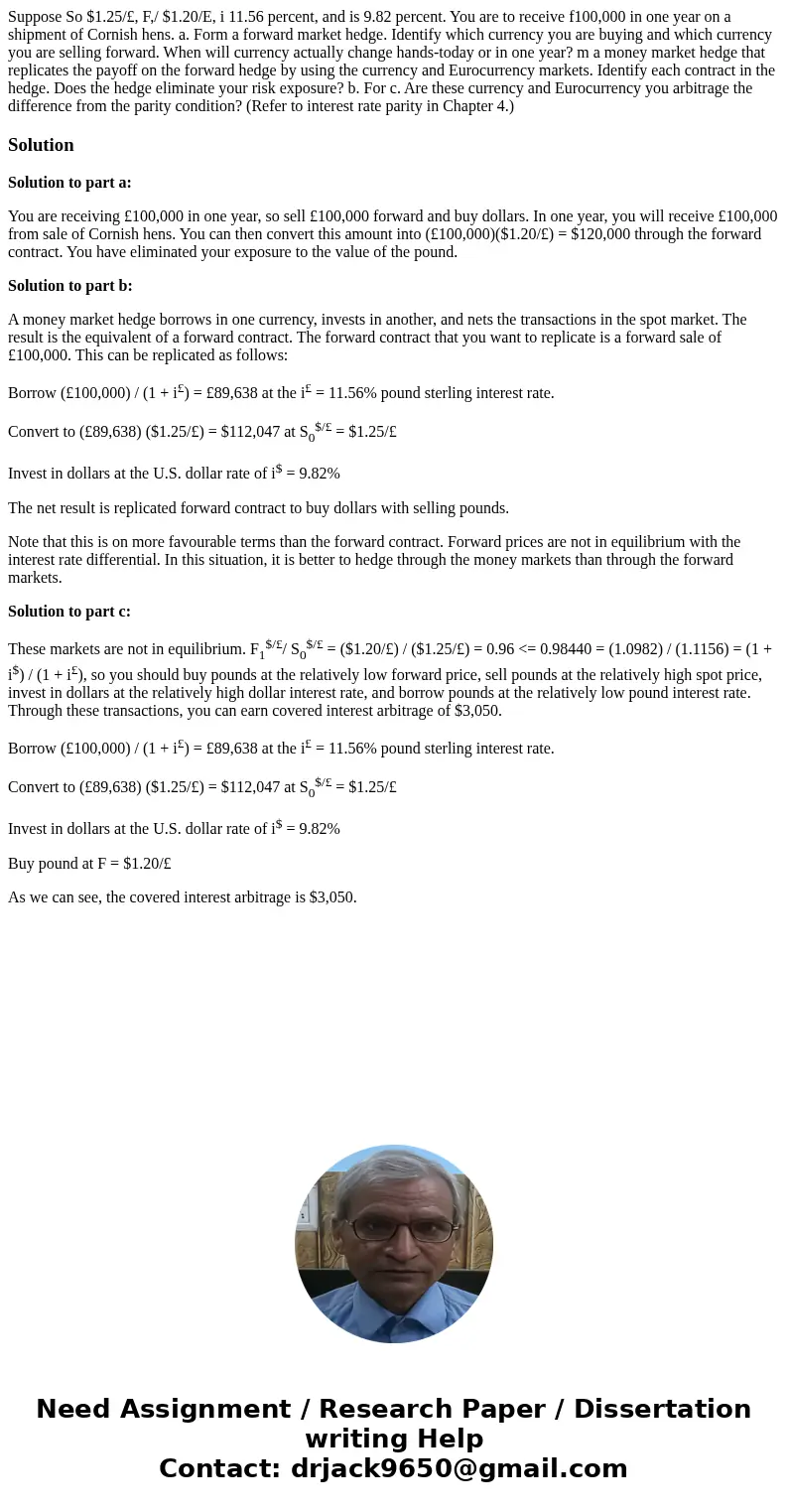Suppose So 125 F 120E i 1156 percent and is 982 percent You
Solution
Solution to part a:
You are receiving £100,000 in one year, so sell £100,000 forward and buy dollars. In one year, you will receive £100,000 from sale of Cornish hens. You can then convert this amount into (£100,000)($1.20/£) = $120,000 through the forward contract. You have eliminated your exposure to the value of the pound.
Solution to part b:
A money market hedge borrows in one currency, invests in another, and nets the transactions in the spot market. The result is the equivalent of a forward contract. The forward contract that you want to replicate is a forward sale of £100,000. This can be replicated as follows:
Borrow (£100,000) / (1 + i£) = £89,638 at the i£ = 11.56% pound sterling interest rate.
Convert to (£89,638) ($1.25/£) = $112,047 at S0$/£ = $1.25/£
Invest in dollars at the U.S. dollar rate of i$ = 9.82%
The net result is replicated forward contract to buy dollars with selling pounds.
Note that this is on more favourable terms than the forward contract. Forward prices are not in equilibrium with the interest rate differential. In this situation, it is better to hedge through the money markets than through the forward markets.
Solution to part c:
These markets are not in equilibrium. F1$/£/ S0$/£ = ($1.20/£) / ($1.25/£) = 0.96 <= 0.98440 = (1.0982) / (1.1156) = (1 + i$) / (1 + i£), so you should buy pounds at the relatively low forward price, sell pounds at the relatively high spot price, invest in dollars at the relatively high dollar interest rate, and borrow pounds at the relatively low pound interest rate. Through these transactions, you can earn covered interest arbitrage of $3,050.
Borrow (£100,000) / (1 + i£) = £89,638 at the i£ = 11.56% pound sterling interest rate.
Convert to (£89,638) ($1.25/£) = $112,047 at S0$/£ = $1.25/£
Invest in dollars at the U.S. dollar rate of i$ = 9.82%
Buy pound at F = $1.20/£
As we can see, the covered interest arbitrage is $3,050.

 Homework Sourse
Homework Sourse